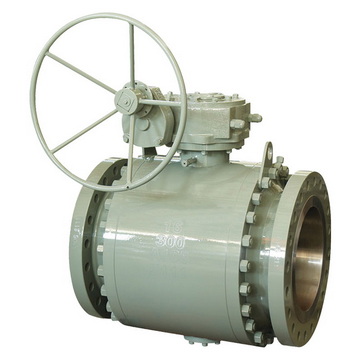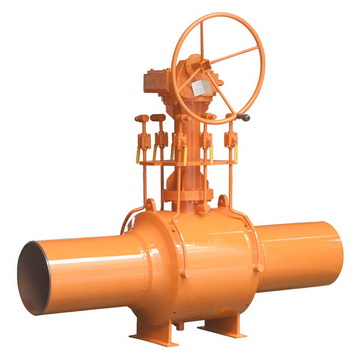How to Choose the Right Ball Valve Seat for Your Application
Content Menu
● Understanding Ball Valve Seats and Their Roles
● Seat Material Families and Their Trade-offs
● Seating Geometry and Concepts
● Key Selection Criteria by Application
● Application Profiles: Industry-Specific Guidance
● Engineering Guidelines and Best Practices
● Case Studies and Real-World Scenarios
● Conclusion and Call to Action
● FAQ
>> 1: Which Ball valve seat materials are best for seawater desalination environments?
>> 2: How does temperature impact Ball valve seat performance?
>> 3: Can a seat be replaced without removing the valve from the pipeline?
>> 4: What is the difference between soft-seated and metal-seated ball valves regarding longevity?
>> 5: How should OEM partners approach seat selection for offshore platforms?
Introduction
Ball valve seats are central to the performance and longevity of ball valves used across the oil and gas sector, seawater desalination, offshore drilling platforms, and related midstream and downstream processes. The right Ball valve seat design and material selection directly influence leak-tightness, abrasion resistance, thermal stability, and maintenance costs. For original equipment manufacturers (OEMs) and foreign brand partners, selecting seats that align with media compatibility, operating temperatures and pressures, and service profiles is a strategic determinant of overall valve reliability. This article provides an in-depth, practical framework for choosing the appropriate Ball valve seat for diverse applications, with emphasis on the interplay between seat materials, seating geometry, and system requirements. It also outlines considerations specific to floating ball valves, ear-pin (trunnion) ball valves, and top-entry ball valves, enabling designers and purchasers to tailor seat configurations to branded OEM packages and regional certification needs.

Understanding Ball Valve Seats and Their Roles
A Ball valve seat is the sealing interface that contacts the ball to form a tight shut-off under operating conditions. The seat must withstand repeated valve cycling, resist extrusion under differential pressure, and maintain integrity in hostile media environments. Materials for Ball valve seats range from elastomeric compounds and PTFE to PEEK and metal alloys, each bringing distinct trade-offs between sealing performance, chemical compatibility, temperature tolerance, and wear resistance. For OEM portfolios targeting international markets, a blended approach that combines a primary soft seal with a secondary metal-to-metal or hardfaced interface often yields robust performance across a broad range of applications.
Seat Material Families and Their Trade-offs
- Soft seats (elastomeric materials): Provide excellent initial sealing and low torque requirements, delivering superior leak tightness at ambient to moderate temperatures. However, elastomeric seats may suffer from chemical swelling, compression set, and degradation in high-temperature or aggressive media. They are well-suited for hydrocarbons with moderate pressures and when chemical compatibility is established. For global OEM programs, soft seats are commonly paired with hard seats in dual-seal configurations to improve life cycle performance.
- PTFE seats: Known for outstanding chemical resistance and wide temperature capability, PTFE seats minimize friction and facilitate smooth operation. They are adept in many hydrocarbon services and gas pipelines but may require careful design to mitigate creep and extrusion under high differential pressures.
- PEEK seats: Offering higher mechanical strength and temperature resistance than many elastomers or PTFE alone, PEEK seats provide improved stability in elevated-temperature service and in challenging chemical environments. They are appropriate for demanding applications where a balance of toughness, wear resistance, and chemical compatibility is essential.
- Metal seats: Typically employed in harsh environments involving high temperatures, high pressures, or abrasive media. Metal seats (including hardened alloys and carbide-reinforced options) deliver excellent long-term durability but may require higher actuation torque and precise mating to maintain tight shut-off. They are frequently used in critical upstream oil and gas, desalination pretreatment areas, and offshore platforms.
- Graphite and composite seats: Graphite-based seats offer superior wear resistance and good thermal performance, especially in high-cycle applications. Graphite composites can be tailored for specific media and temperature regimes, delivering reliable seals in challenging service.
Seating Geometry and Concepts
- Soft-seated configurations emphasize tight shut-off through a compliant interface, often benefiting from a low-friction interaction with the ball. These designs excel in clean media and moderate duty cycles.
- Metal-to-metal seating provides rugged performance at elevated temperatures and pressures, with careful control of surface finishes and hardfacing to reduce wear and galling.
- Dual-seal arrangements combine a primary soft seal with a secondary metal or hard-seated interface, extending service life and enabling replacement strategies without compromising core sealing integrity.
- Floating seats vs fixed seats: In floating-seat designs, the seat moves slightly with seating pressure, enabling a self-energizing seal that adapts to differential pressure. Fixed-seat designs rely on precise alignment and robust seat-to-ball interfaces, often paired with hardface materials for abrasion resistance.
- Seat extrusion considerations: In high differential pressure services, seat extrusion can degrade seal performance. Design measures such as anti-extrusion rings, controlled cavity geometries, and reinforced seat materials help mitigate this risk.

Key Selection Criteria by Application
- Media compatibility: Corrosive or abrasive media (seawater, chlorinated desalination streams, sour gases, hydrogen-rich streams) demand materials with appropriate resistance. OEMs should map media exposure to seat chemistry, including elastomer formulations and polymer blends that resist chemical attack and swelling.
- Temperature and pressure envelopes: Service temperatures from cryogenic to high heat, paired with system pressures, dictate material choice and seating geometry. Thermal cycling resilience is essential for offshore environments where ambient temperatures fluctuate and equipment experiences heat soak during operation.
- Cycling and wear: Frequent opening and closing amplifies wear on the seat interface. In high-cycle environments, graphite or ceramic hardfacing can extend life, while elastomeric seats may require more frequent replacement.
- Mechanical design and actuation: The chosen seat must align with stem design, gland packing, and actuator torque profiles. High-torque systems require seats and interfaces that resist galling and provide predictable sealing behavior.
- Maintenance and supply chain: OEMs should consider the availability of spare seats, ease of disassembly, and standardized seat-cartridge configurations that minimize downtime. A modular seat approach can streamline field maintenance across global markets.
- Certifications and quality: For international markets, adherence to industry standards (API 6D, ISO, CSA, PED) and material traceability are critical. OEMs should ensure seat materials meet chemical, temperature, and compatibility specifications required by customers and regions.
Application Profiles: Industry-Specific Guidance
- Oil and gas (upstream, midstream, downstream): Ball valve seats are engineered to handle hydrocarbon media, saline environments, and temperature fluctuations. In upstream settings, higher pressures and extreme conditions may favor metal or carbide-enhanced seats, with soft seals as secondary barriers. In downstream and midstream, stability, leak-tightness, and maintenance practicality guide toward dual-seal configurations and modular seat cartridges.
- Seawater desalination: Chlorine exposure and saline corrosion necessitate seats built from PTFE, PEEK, or corrosion-resistant metals, with coatings or protective layers to minimize chloride-induced degradation. Desalination systems often benefit from low-friction materials to preserve actuator life during frequent cycling.
- Offshore drilling platforms: Harsh sea environments and mechanical vibrations call for robust seats with strong wear resistance and anti-corrosion properties. Hybrid seat designs that combine elastomeric elements for initial sealing and metal components for long-term durability are common in these contexts.
- OEM packaging considerations: Branded OEM subsets require compatibility with standardized flanges, predictable maintenance intervals, and traceability for quality control. Seat assemblies should be designed to support multilingual manuals and global warranty coverage, facilitating seamless international deployment.
Engineering Guidelines and Best Practices
- Selection workflow: Start with process data—media composition, temperature, pressure, cycle rate—and then decide on material family (soft vs metal vs composite). Validate whether a dual-seal or cartridge-based system best meets life-cycle cost and serviceability goals.
- Installation and maintenance: Establish torque ranges that achieve optimal seating without over-tightening, verify alignment during assembly, and implement preventive maintenance plans with clear replacement intervals. Document all OEM procedures and provide field technicians with clear instructions.
- Troubleshooting: Leaks, intermittent seals, and extrusion symptoms typically indicate material incompatibility, improper seating, or wear. Root-cause analysis should examine media compatibility, surface finish, and mating components, followed by material substitution or design adjustments as needed.
- Life-cycle cost thinking: Evaluate the total cost of ownership, including initial seat material costs, expected service life, downtime for replacements, and availability of spare parts across market regions. A design with modular seats and easy replacement reduces downtime and lowers total cost of ownership.
Case Studies and Real-World Scenarios
- Offshore platform valve seat selection under salt spray and vibration: Outline challenges, material choices (e.g., reinforced elastomer, metal-to-metal interfaces), expected service life, and maintenance strategies.
- Desalination plant seat selection in chlorine-rich environments: Discuss corrosion resistance requirements, chosen materials, and compatibility with protective coatings.
- High-pressure upstream valve seat upgrade path: Describe how material upgrades or hardfacing enhance performance and reduce downtime.
Conclusion and Call to Action
Choosing the right Ball valve seat hinges on a deliberate balance of media compatibility, temperature and pressure regimes, cycling demands, and installation/maintenance practicality. For OEM programs serving global markets, a modular, dual-seal strategy that combines the best attributes of soft and hard seat materials often yields the most reliable, cost-effective solution across floating, ear-pin (trunnion), and top-entry ball valves. OEM partnerships can tailor seat assemblies, conduct sample testing, and provide region-specific technical support and multilingual documentation to accelerate adoption. Interested brands, distributors, and manufacturers are invited to contact the OEM team to discuss project-specific seat material selections, lead times, and customized packaging options that reinforce brand fidelity and service excellence.

FAQ
1: Which Ball valve seat materials are best for seawater desalination environments?
- Answer: For seawater desalination, materials with high corrosion resistance and chemical stability such as PTFE and PEEK are favored, often coupled with corrosion-resistant metal options or protective coatings to withstand chloride exposure and oxidizing environments.
2: How does temperature impact Ball valve seat performance?
- Answer: Temperature affects material stiffness, creep resistance, and sealing effectiveness. Higher temperatures can accelerate wear and reduce elastomer life, while low temperatures may reduce elastomer elasticity and sealing. Material selection should align with the operating temperature range to maintain reliable shut-off.
3: Can a seat be replaced without removing the valve from the pipeline?
- Answer: Replacement feasibility depends on valve design. Some modular seat cartridges enable in-situ replacement, but many configurations require valve isolation and partial disassembly. OEM manuals provide specific guidance for each model.
4: What is the difference between soft-seated and metal-seated ball valves regarding longevity?
- Answer: Soft-seated valves offer excellent sealing at lower pressures with low torque requirements but may wear faster in aggressive media or high-temperature service. Metal-seated valves provide superior high-temperature and high-pressure performance and longer life in harsh conditions, often at the cost of higher torque.
5: How should OEM partners approach seat selection for offshore platforms?
- Answer: Offshore platforms demand seats with strong corrosion resistance, abrasion resistance, and stability under vibration. A dual-seal or cartridge-based approach with anti-extrusion features and robust coatings is common, along with comprehensive maintenance plans and field service support.
Hot tags: Choosing Ball Valve Seat, Best Ball Valve Seat for Application, Ball Valve Seat Selection Guide, How to Pick Ball Valve Seat, Valve Seat Material Choices, Ball Valve Seat for Specific Use, High-Performance Valve Seats, Industrial Ball Valve Seat Selection, Application-Specific Valve Seats, Ball Valve Seat Compatibility